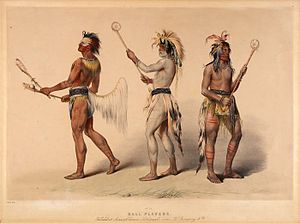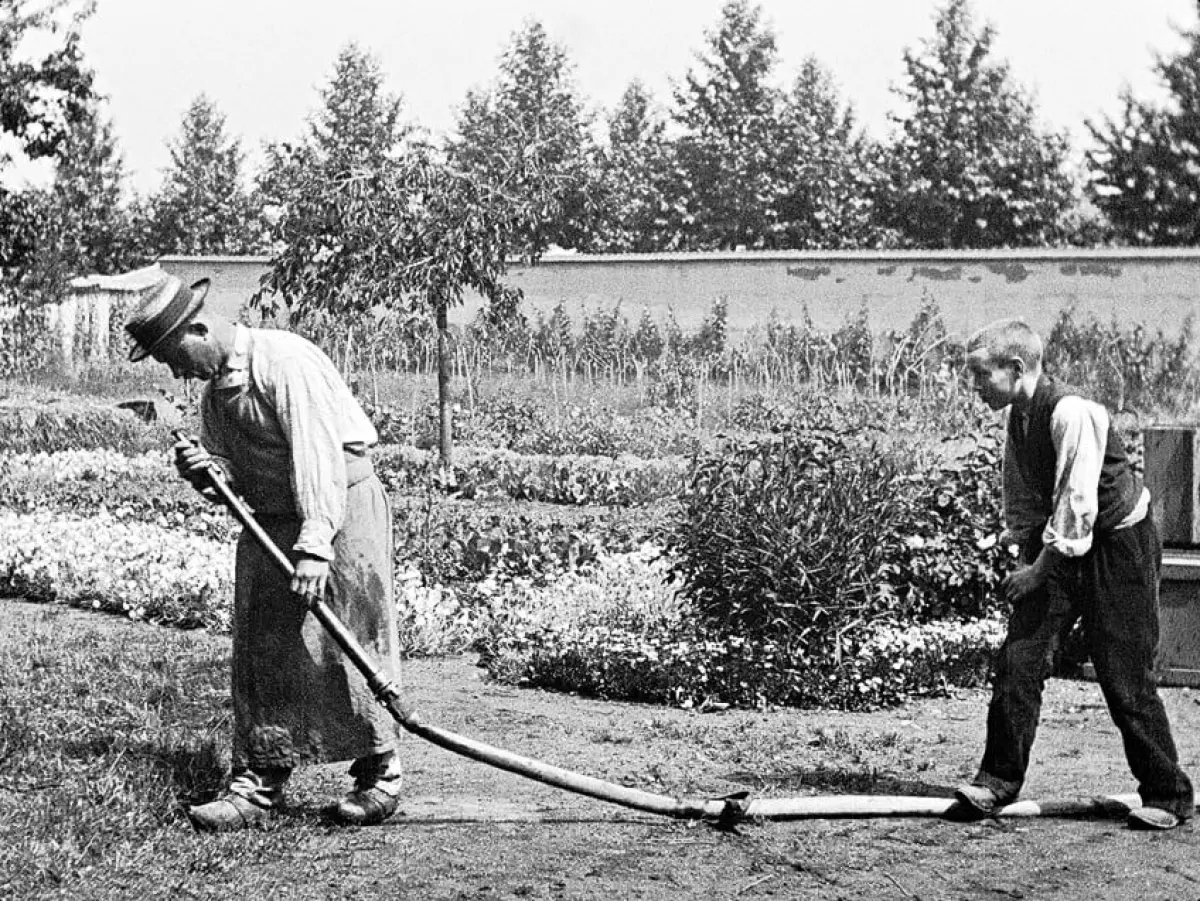Introduction
Lacrosse, a game deeply rooted in history, has captivated the hearts of people for centuries. Originating from tribal games played by Native Americans, lacrosse has evolved into a collegiate and professional sport with a global following. In this article, we will delve into the fascinating history of lacrosse, exploring its indigenous roots, the influence of European settlers, and the game's modern-day prominence.
 Image source: Ball players, a hand-colored lithograph by George Catlin
Image source: Ball players, a hand-colored lithograph by George Catlin
Indigenous North American Game
The origins of lacrosse can be traced back to the tribal games played by Native Americans in the eastern Woodlands and Plains tribes of what is now the United States and Canada. These games, played by hundreds of native men, involved the use of sticks and a ball. The game began with the ball being thrown into the air, and both teams would rush to catch it. Passing the ball was considered a trick, and players were expected to face opponents head-on rather than dodge them.
 Image source: Jim Tubby, Mississippi Choctaw, preparing for a stickball game in 1908.
Image source: Jim Tubby, Mississippi Choctaw, preparing for a stickball game in 1908.
Indigenous North American Game
Modern-day lacrosse descended from and resembles the games played by various Native American communities. Different tribes had their own unique names for the game, such as "dehontsigwaehs" in Oee, "Tewaaraton" in Mohawk, "baaga`adowe" in Ojibwe, and "Ishtaboli" or "kapucha toli" in Choctaw.
The game quickly grew in popularity and became one of the oldest team sports in North America. Evidence suggests that a version of lacrosse originated in Canada as early as the 17th century. Native American lacrosse was played across Canada, with the Great Lakes, Mid-Atlantic seaboard, and American South being the most popular regions.
Traditional lacrosse games were grand events that could last for several days. Hundreds of players from different villages or tribes would participate, and the games were played in open plains between the two communities. The goals were often marked by large rocks or trees, and playing time stretched from sunrise to sunset.
Rituals
Pregame rituals played an essential role in lacrosse. Similar to the rituals associated with war, players would paint their bodies and decorate their sticks with objects symbolizing qualities desired in the game. There were strict taboos on what players could eat before a match, and medicine men performed rituals to prepare both players and their sticks. The night before a game, players wore ceremonial regalia and participated in a special dance. Sacrifices were made, and opponents were intimidated through sacred expressions.
 Image source: "Ball-play Dance" by George Catlin, 1834. Pregame rituals were an integral part of lacrosse.
Image source: "Ball-play Dance" by George Catlin, 1834. Pregame rituals were an integral part of lacrosse.
Equipment
Early lacrosse balls were made of wood or deerskin stuffed with hair and were typically three inches in diameter. The first lacrosse sticks resembled giant wooden spoons without netting. Over time, different styles of sticks emerged, with Great Lakes style sticks featuring a circle filled with netting at one end, while Iroquois and Eastern Woodland style sticks had a U-shaped head. Players often added intricate carvings to their sticks to aid them during the game.
European Involvement
The first encounters between Europeans and lacrosse occurred when French Jesuit missionaries observed the game in the St. Lawrence Valley during the 1630s. Although the Jesuits condemned lacrosse due to its violence, involvement in betting, and religious significance, other European colonists became intrigued by the game. By the mid-18th century, many French colonists were playing lacrosse, albeit with lesser skill than their Native American counterparts.
 Image source: Men from the Mohawk Nation at Kahnawake, the Canadian lacrosse champions in 1869.
Image source: Men from the Mohawk Nation at Kahnawake, the Canadian lacrosse champions in 1869.
Lacrosse Today
Today, lacrosse enjoys significant popularity in Canada, the United States, the United Kingdom, and Australia. While lacrosse may not be as mainstream as other sports, its participation and interest are steadily growing. US Lacrosse reports a 47% increase in boys' lacrosse participation and a 43.1% increase in girls' lacrosse participation. Additionally, the NCAA has seen a rise in the number of new men's and women's lacrosse programs.
The professional landscape of lacrosse has transformed with the emergence of the Premier Lacrosse League (PLL) and Athletes Unlimited Lacrosse. The PLL, founded by Paul Rabil, offers higher wages, better benefits, and increased viewership compared to the Major League Lacrosse (MLL) it replaced. Athletes Unlimited Lacrosse is contributing to the development of women's lacrosse and is part of the growing pro women's sports movement in the US.
Conclusion
Lacrosse, a game deeply intertwined with Native American history and traditions, has evolved into a well-respected and competitive sport. From its humble origins on the open plains to the modern arenas and fields, lacrosse has captivated players and fans alike. Its rich history, cultural significance, and continuous growth make it an enduring symbol of athleticism, teamwork, and resilience.
References
- Wikipedia contributors. (2021, November 8). Lacrosse. In Wikipedia, The Free Encyclopedia. Retrieved 11:50, November 27, 2021, from https://en.wikipedia.org/w/index.php?title=Lacrosse&oldid=1054488763
















